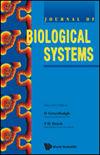海洋保护区的最佳布局以避免鱼类资源的灭绝
IF 1.5
4区 数学
Q3 BIOLOGY
引用次数: 2
摘要
在本文中,我们建议研究一个具有可变价格的渔业模型。我们假设价格的演变速度比系统的其他部分快得多。在某些假设下,这使得可以在两个时间尺度上将渔业系统视为一个慢速-快速系统,并使用二维简化模型对其进行研究。可能出现两种主要情况。我们称之为灾难性平衡的第一种情况对应于过度开采,导致鱼类灭绝和价格飙升。第二种情况对应于稳定的可持续渔业平衡。评估了建立海洋保护区(MPA)(禁止捕鱼的地点)对鱼类种群和渔业的可能影响。我们表明,海洋保护区可以通过破坏灾难性平衡并只保持一个全局渐近稳定的正平衡,对枯竭鱼类种群的恢复产生积极影响。通过提出一个具有MPA的鱼类动力学模型来解决这个问题。假设鱼类在海洋保护区和捕鱼区之间移动,并通过捕鱼进行捕捞。我们表明,为了避免种群灭绝并长期稳定渔业,有必要确定一个捕鱼区,使其承载能力与水面的比例足够小。我们进一步表明,通过明智地选择MPA的表面积,可以优化总捕获。本文章由计算机程序翻译,如有差异,请以英文原文为准。
Optimal Placement of Marine Protected Areas to Avoid the Extinction of the Fish Stock
In this paper, we propose to study a fishery model with variable price. We assume that the price evolves much faster than the rest of the system. Under certain assumptions, this makes it possible to consider the fishery system as a slow–fast system, on two time scales, and to study it with a reduced model of dimension two. Two main cases can occur. The first one which we called catastrophic equilibrium corresponds to over-exploitation leading to fish extinction and a booming price. The second case corresponds to a sustainable fishery equilibrium which is stable. The possible effects of the creation of marine protected areas (MPAs), sites where fishing is prohibited, on the fish stock and fishery are evaluated. We show that MPAs can have a positive effect on the restoration of depleted fish stocks by destabilizing the catastrophic equilibrium and keeping only one positive equilibrium which will be globally asymptotically stable. This problem is addressed by proposing a model with MPA for the fish dynamics. Fish are assumed to move between MPA and fishing area and are subject to harvesting through fishing. We show that to avoid the extinction of the stock and stabilize the fishery in the long term, it is necessary to define a fishing zone such that the ratio of its carrying capacity to its surface is small enough. We further show that with a judicious choice of the surface area of the MPA, it is possible to optimize the total capture.
求助全文
通过发布文献求助,成功后即可免费获取论文全文。
去求助
来源期刊
CiteScore
2.80
自引率
12.50%
发文量
31
审稿时长
1 months
期刊介绍:
The Journal of Biological Systems is published quarterly. The goal of the Journal is to promote interdisciplinary approaches in Biology and in Medicine, and the study of biological situations with a variety of tools, including mathematical and general systems methods. The Journal solicits original research papers and survey articles in areas that include (but are not limited to):
Complex systems studies; isomorphies; nonlinear dynamics; entropy; mathematical tools and systems theories with applications in Biology and Medicine.
Interdisciplinary approaches in Biology and Medicine; transfer of methods from one discipline to another; integration of biological levels, from atomic to molecular, macromolecular, cellular, and organic levels; animal biology; plant biology.
Environmental studies; relationships between individuals, populations, communities and ecosystems; bioeconomics, management of renewable resources; hierarchy theory; integration of spatial and time scales.
Evolutionary biology; co-evolutions; genetics and evolution; branching processes and phyllotaxis.
Medical systems; physiology; cardiac modeling; computer models in Medicine; cancer research; epidemiology.
Numerical simulations and computations; numerical study and analysis of biological data.
Epistemology; history of science.
The journal will also publish book reviews.

 求助内容:
求助内容: 应助结果提醒方式:
应助结果提醒方式:


